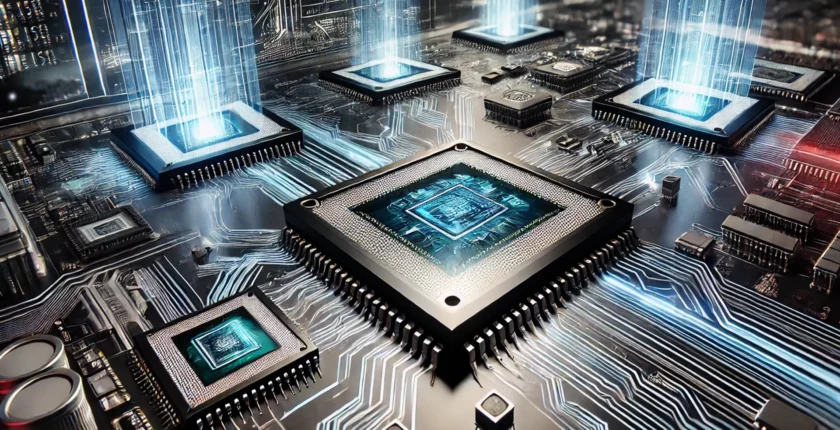Blog
Shaping the Future: Key Trends in VLSI Design for 2025
- December 3, 2024
- Posted by: Admin
- Category: VLSI
No Comments

As we approach 2025, the field of Very-Large-Scale Integration (VLSI) continues to evolve, driven by the demands of advanced technologies like artificial intelligence, IoT, and quantum computing. Here are the latest trends shaping the future of VLSI design:
3D Integrated Circuits (3D ICs)
- Overview: 3D IC technology stacks multiple layers of silicon wafers to create high-density chips.
- Benefits:
- Reduced interconnect length, improving speed and energy efficiency.
- Higher packing density, crucial for compact devices.
- Applications: High-performance computing, AI accelerators, and advanced mobile devices.
Chiplets and Modular Design
- Overview: Chiplets involve designing modular components that can be integrated into a single system.
- Benefits:
- Enhanced flexibility for tailoring chips to specific applications.
- Reduced design complexity and cost.
- Applications: Data centers, cloud computing, and edge devices.
Advanced Node Scaling
- Overview: Continued scaling of transistors, with nodes reaching below 3 nm.
- Challenges:
- Managing heat and power in ultra-dense circuits.
- Addressing quantum effects at smaller scales.
- Applications: CPUs, GPUs, and AI-specific processors.
AI-Driven VLSI Design
- Overview: Artificial intelligence and machine learning tools are optimizing the design process.
- Benefits:
- Faster design iterations and reduced time-to-market.
- Improved power, performance, and area (PPA) metrics.
- Applications: Automated design tools, error detection, and resource optimization.
Energy-Efficient Architectures
- Overview: Low-power designs are critical for battery-operated and IoT devices.
- Trends:
- Sleep transistors and power gating techniques.
- Energy-efficient communication protocols.
- Applications: IoT sensors, wearables, and portable electronics.
Neuromorphic Computing
- Overview: Mimics the structure of the human brain for AI applications.
- Benefits:
- Significant reduction in power consumption.
- Real-time processing for AI workloads.
- Applications: Robotics, real-time data analysis, and edge AI.
Silicon Photonics
- Overview: Integration of optical components on silicon chips for high-speed communication.
- Benefits:
- Overcomes the limitations of electrical interconnects.
- Enables faster data transfer with lower power consumption.
- Applications: Data centers, high-speed networks, and high-performance computing.
Secure VLSI Designs
- Overview: Security at the hardware level is gaining prominence.
- Trends:
- Hardware encryption modules.
- Tamper-resistant designs.
- Applications: IoT devices, financial systems, and critical infrastructure.
Quantum VLSI
- Overview: Development of VLSI for quantum processors.
- Challenges:
- Integration of cryogenic components.
- Managing quantum coherence and noise.
- Applications: Quantum computing, cryptography, and advanced simulations.
Ecosystem Collaboration
- Overview: Greater collaboration between industry leaders, academia, and open-source communities.
- Benefits:
- Accelerates innovation and adoption of new methodologies.
- Encourages standardization in chip design and manufacturing.
Conclusion
The trends in VLSI design for 2025 highlight a future of unprecedented innovation and integration. With the convergence of advanced fabrication techniques, AI-driven workflows, and the push for energy-efficient and secure designs, VLSI is set to redefine the landscape of modern electronics.
